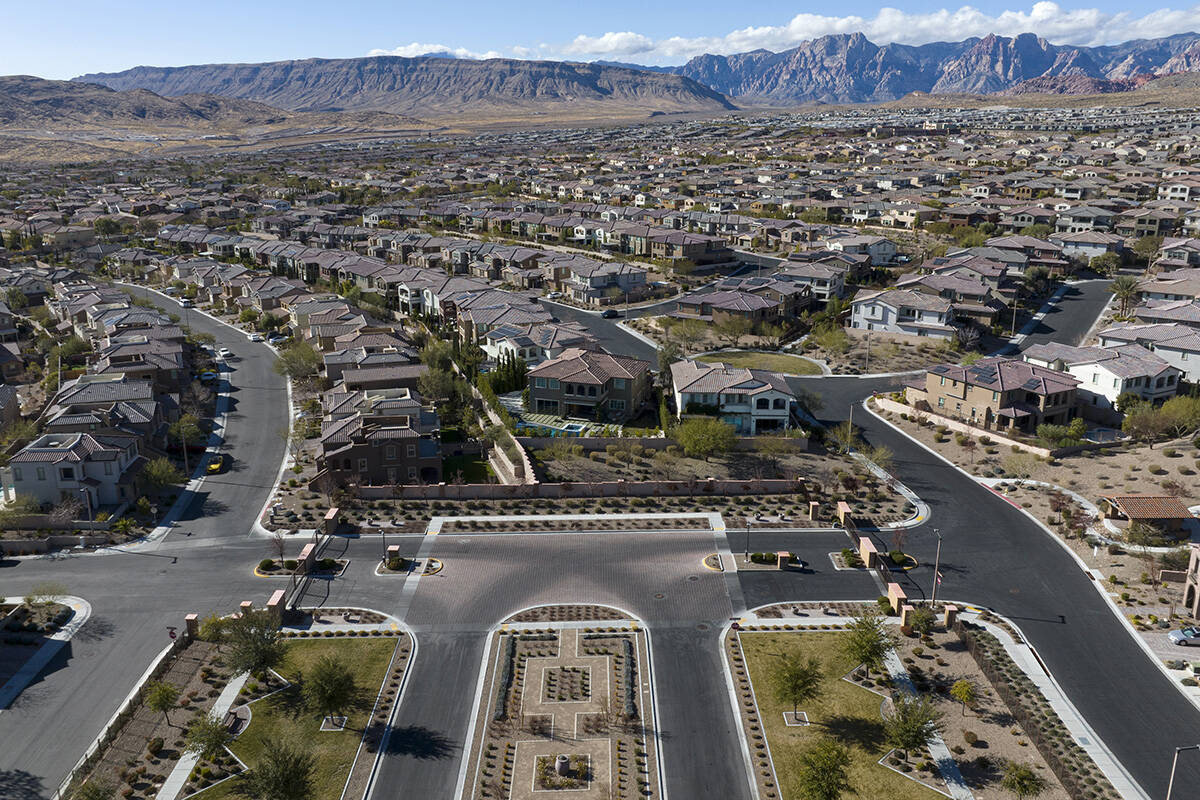Where are Las Vegas Valley home prices rising and dropping?
Three quarters of the ZIP codes in Southern Nevada have seen home price declines year-over-year, according to a new study.
Most of the ZIP codes (74 percent) that saw the largest per square foot median price decline in the valley included parts of the Las Vegas Strip where there aren’t a lot of single-family houses but an ample number of high-rise condominiums and apartments, according to a new study by the UNLV Lied Center for Real Estate.
The ZIP code with the biggest decline was 89158 (17.5 percent), which is located between Interstate 15 and Las Vegas Boulevard encompassing such properties as Park MGM Las Vegas and the Aria Sky Suites. The ZIP code with the second biggest price decline was 89109 (10.5 percent) which encompasses a number of large properties on the Strip, including MGM Grand and Caesars Palace. That was followed by 89119 (9.8%) and 89103 (9.6%) and 89145 (9.3%), which borders Summerlin Parkway.
ZIP codes with the strongest price gains are largely located on the eastern side of the valley: 89101 (12.4 percent), which encompasses downtown Las Vegas and Fremont Street; 89110 (7.9 percent), which includes parts of east Las Vegas, east of North Pecos Road; and 89156 (13.5 percent), which is east of 89110 and encompasses a large swath of the far east Las Vegas Valley.
Two outliers — 89118 and 89146 in the southwest valley — each posted year-over-year median home price per square foot increases of approximately 4 percent.
Las Vegas could been seen as ground zero for an overall national trend — “price deceleration” for homes becoming more of the norm than the exception to end the year, said Shawn McCoy, one of the authors of the study along with Nicholas Irwin at UNLV.
“After producing a national heat map of home price reductions, our team found that Las Vegas sits at a geographic epicenter of the nation’s largest cluster of submarkets experiencing price declines,” he said. “This pattern suggests that the trends emerging in Las Vegas stem from a unique interplay of macroeconomic forces, such as higher interest rates, and local factors shaping housing demand and supply within the region.”
Las Vegas Valley real estate has been going through a rough patch over the past few years coming out of the pandemic. A plethora of issues are hitting the market including a slowdown in building due to increased construction and financing costs, a lack of land to develop as the federal government controls most of the undeveloped land left in the valley and mortgage rates that have been above 6 percent since 2022.
McCoy added however those looking to buy starter homes or enter the real estate market for the first time may not be seeing price drops in the real world just yet.
“We suspect that much of the overall price decline in Southern Nevada is likely being driven by reductions among homes priced above the median,” he said. “If that’s the case, buyers targeting homes below the median may not necessarily be seeing meaningful price relief, however, that relief may very well be right around the corner.”
Statewide, 54 percent of ZIP codes experienced price declines, ranking Nevada sixth in the country for year-over-year price drops, according to the study. However, the state’s median home price is still more than $24,000 above the national average.
Contact Patrick Blennerhassett at pblennerhassett@reviewjournal.com.




















